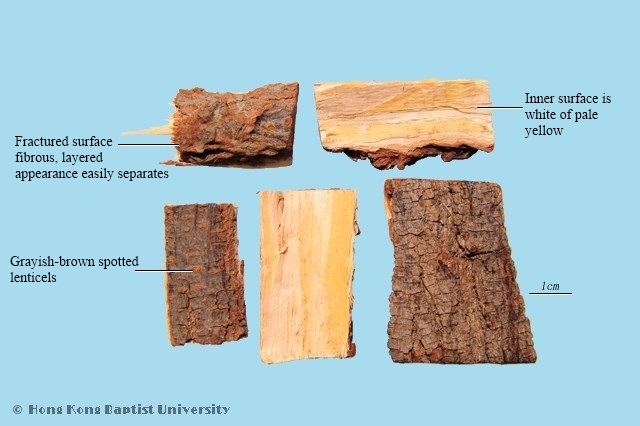Production RegionsPrimarily produced in the Chinese provinces of Sichuan, Guizhou, Hubei, Henan.
Macroscopic FeaturesRoot bark: irregular strips, flakes or grooved shape, uneven length and width, about 3~6mm thick. Externally grayish-brown, lenticels are large and obvious, with irregular longitudinal cracked grooves, cortex often scale-like, old cortex often falls off. Presents with brick-red inner skin; inner surface is pale yellow with thin longitudinal lines. Pliable and firm texture, not easily broken; fractured surface is fibrous and layered, can be peeled off by layers; peeled thin layer has very thin net-like lines. faint odor; very bitter taste. Tree bark: Groove-shaped flakes or long roll-like shape, uneven length, about 30~100cm long, 3~10cm wide, 3~7mm thick; externally grayish-brown, relatively flat, with numerous longitudinal grooves and horizontal enlarged lenticels. Inner surface is white or pale yellow. Firm and brittle texture, easily broken, fractured surface is fibrous layered. Odor and taste are the same as root bark.
Quality RequirementsSuperior medicinal material is dry, thick, large, not rotten, without cortex.
PropertiesBitter; cold; toxic
FunctionsClears heat, dries dampness, kills worms. Apply to ascariasis, enterobiasis, rubella, gaile, and tinea capitis.
OriginThe dried tree bark and root bark of Melia toosendan Sieb. et Zucc., or Melia azedarach L.(Meliaceae).
